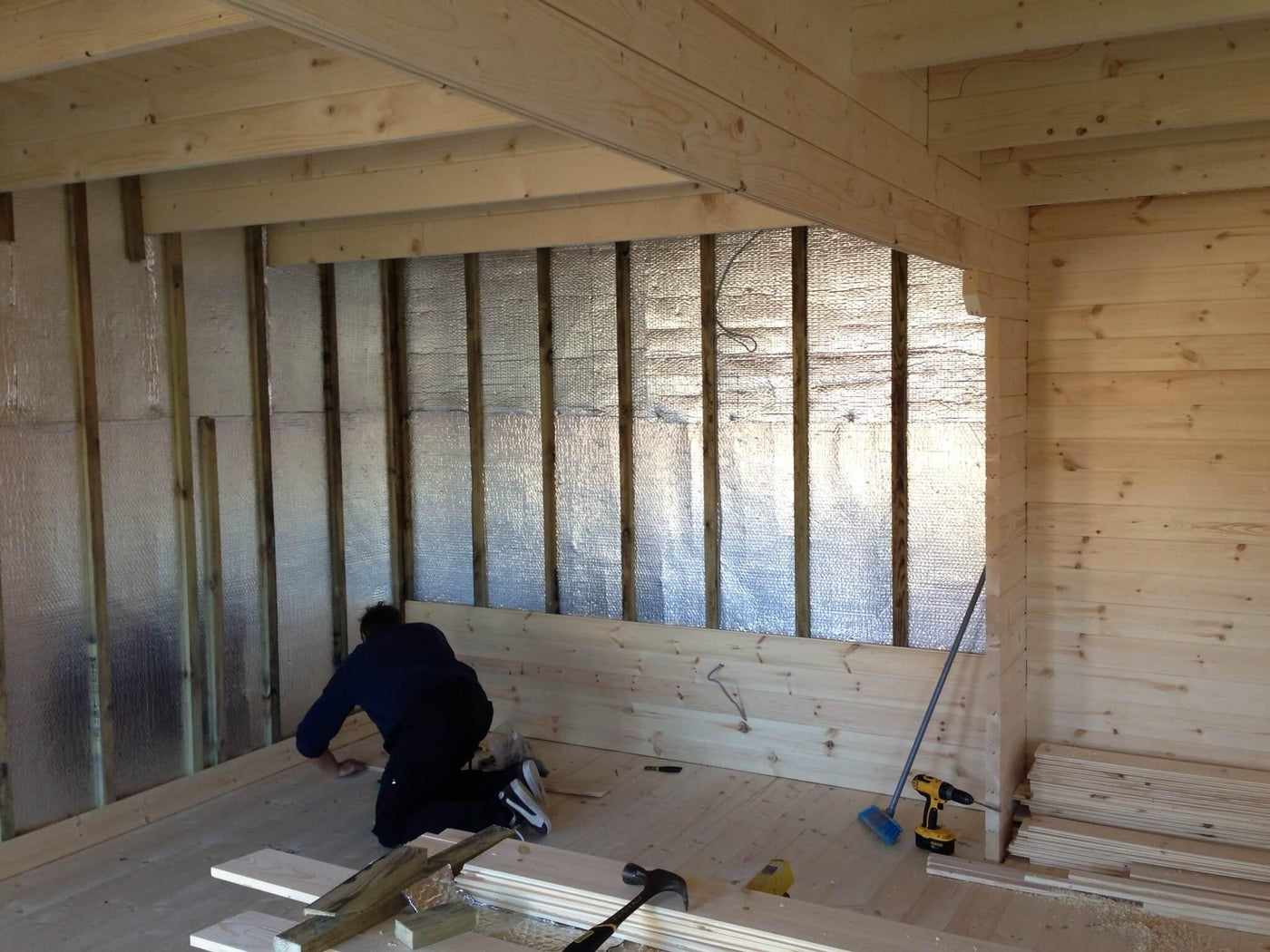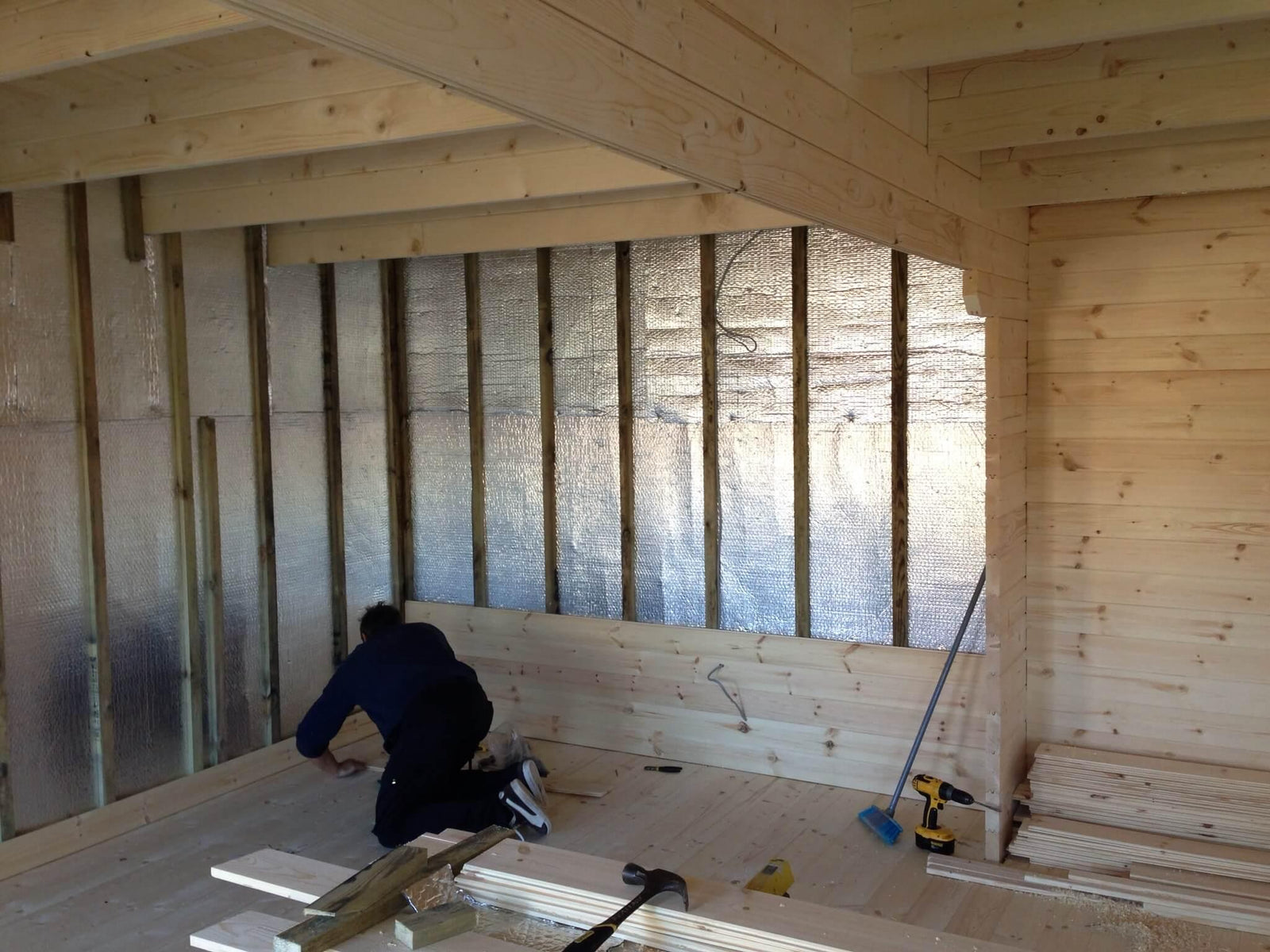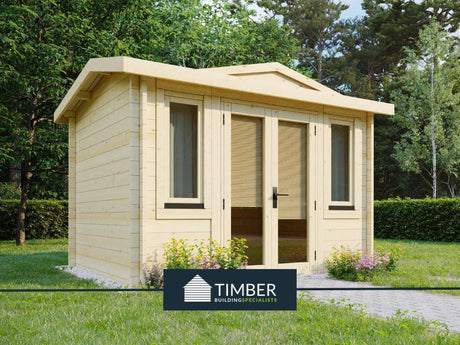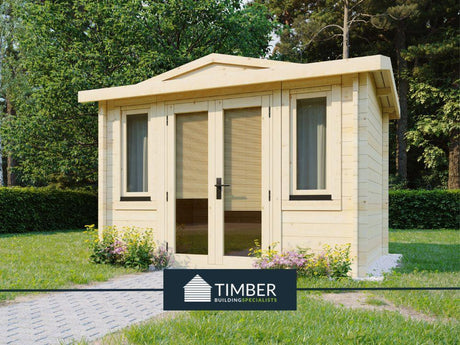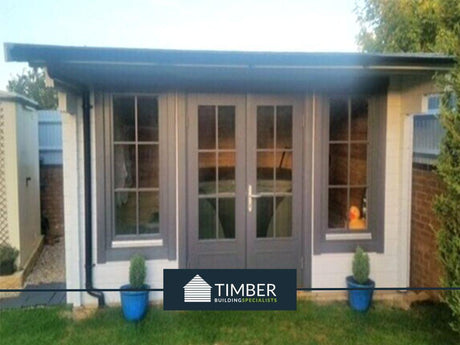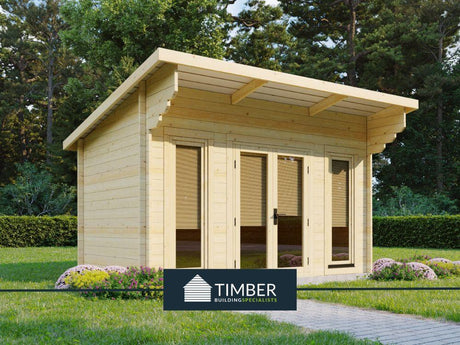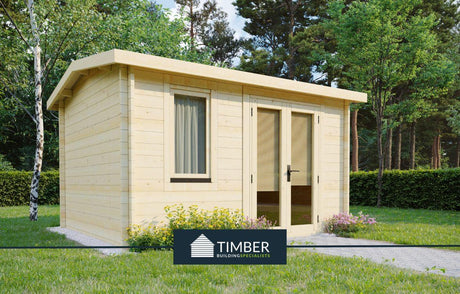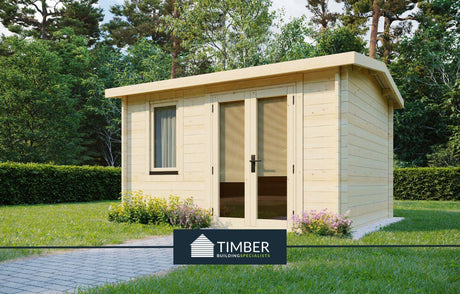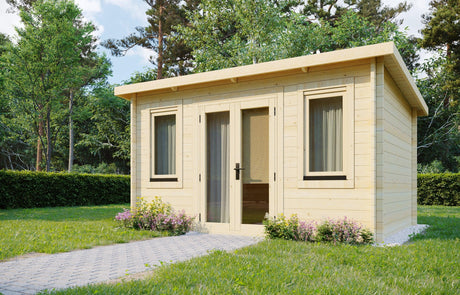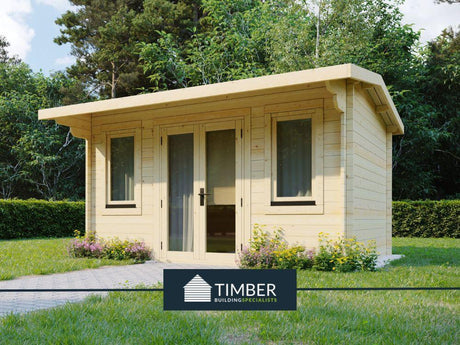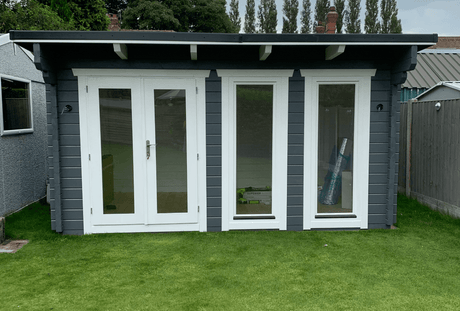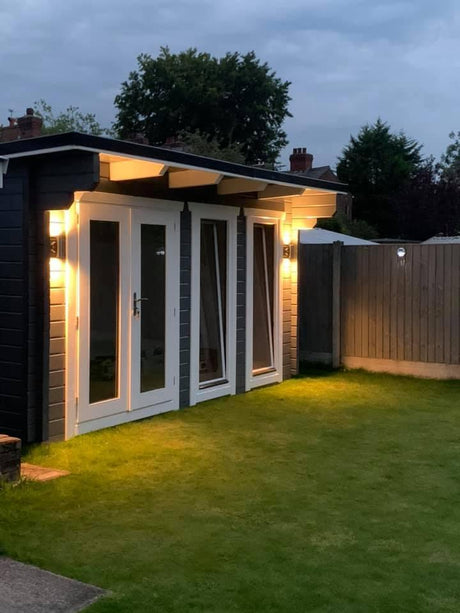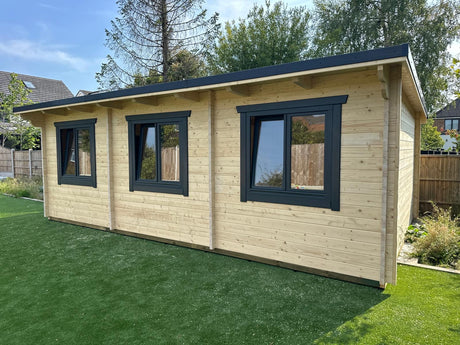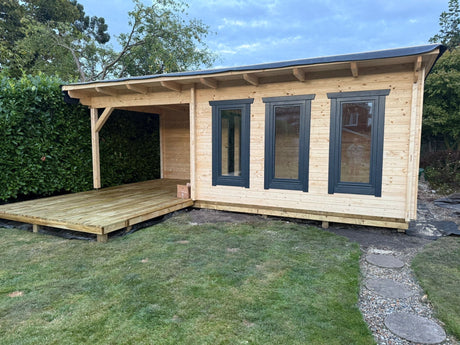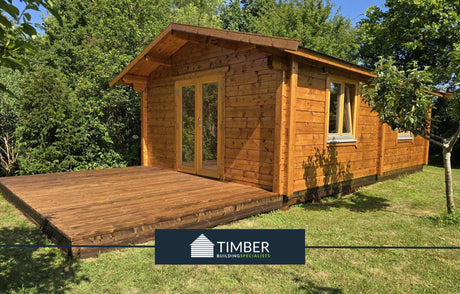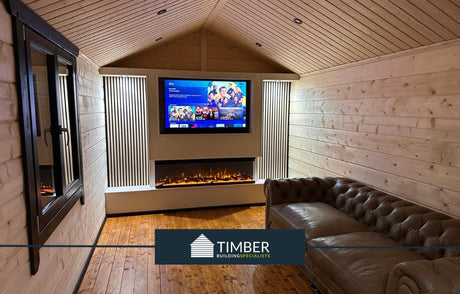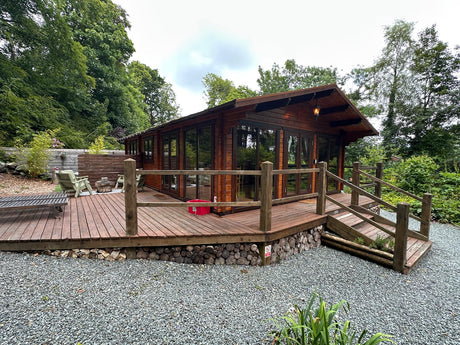Understanding log thickness is key in log cabin construction, affecting everything from durability to energy efficiency. Thicker logs mean stronger, more stable structures with better insulation, reducing heating and cooling costs. You're balancing cost against insulation benefits and aesthetic appeal. These logs offer weather resistance, and building codes often mandate minimum thickness for safety. Ideal thickness depends on the climate, your cabin's purpose, and your budget. Plus, thicker logs can add that robust, rustic charm to your cabin's look. As you consider your needs, remember, choosing the right thickness can significantly enhance your cabin's performance and longevity.
Importance of Log Thickness
In log cabin construction, the thickness of the logs is crucial for both the structural integrity and insulation properties of the home. When you're planning your dream log cabin, understanding the importance of log thickness is essential. Thicker logs not only provide greater strength and stability to the structure but also excel in offering superior insulation. This means that your home will be warmer in the winter and cooler in the summer, reducing your energy costs and making your living space more comfortable throughout the year.
Choosing the right wall thickness is a balancing act. While thicker logs can increase the insulation value, they also come with a heftier price tag and may require more robust foundations due to the increased weight. However, investing in thicker logs from the outset can pay dividends in the long run through energy savings and enhanced durability. It's a decision that impacts not just the aesthetics of your cabin but its functionality and efficiency as well.
In essence, the log thickness you opt for affects nearly every aspect of your log cabin, from its appearance to its environmental footprint. Making an informed choice can ensure that your cabin remains a cozy, sturdy sanctuary for years to come.
Structural Integrity Considerations
When considering the structural integrity of your log cabin, it's crucial to understand how log thickness directly influences its stability and longevity.
Thicker logs mean more mass, which contributes to the overall strength of the structure. Wall log thickness, often measured in millimeters (mm thick), plays a pivotal role in this aspect.
Choosing logs that are sufficiently thick ensures that your cabin can withstand adverse weather conditions, from heavy snowfall to strong winds. It's not just about the aesthetic appeal; it's about making a cabin that lasts.
Interlocking logs, a common technique in log cabin construction, further enhance this stability. The concept is simple: thicker, interlocking logs create a tight seal that contributes to the cabin's structural integrity.
You'll find that structural integrity considerations go beyond just picking the right logs. It's about understanding the balance between the natural characteristics of the wood and the engineering principles that make a log cabin safe and durable.
Insulation and Energy Efficiency
Your log cabin's energy efficiency and insulation capabilities are significantly influenced by the thickness of the logs used in its construction. Thicker logs can better insulate your cabin from external temperature changes, maintaining a comfortable indoor environment. However, understanding this concept goes beyond just acknowledging that 'thicker is better.' Here's why:
- Thermal Mass: The thickness of the logs contributes to the log cabin walls' thermal mass. This means they can absorb, store, and slowly release heat, creating a natural buffering effect against temperature fluctuations.
- Energy Efficiency: Thicker logs mean better insulation. This reduces the need for artificial heating and cooling, leading to lower energy bills. Incorporating double glazed windows complements the logs' insulating properties, further enhancing your cabin's energy efficiency.
- Climate Adaptation: Depending on your climate, the optimal thickness for insulating purposes can vary. In colder regions, thicker logs are essential to retain heat, while in milder climates, a moderate thickness may suffice for effective insulation.

Aesthetic Implications of Thickness
Choosing the right log thickness can dramatically alter the aesthetic appeal of your log cabin, affecting everything from its rustic charm to its perceived sturdiness. When you envision your dream timber building, the thickness of the logs plays a pivotal role in bringing that vision to life. Thicker logs tend to evoke a sense of robustness and durability, suggesting that your cabin can stand the test of time against the elements.
On the flip side, cabins constructed with thinner logs may present a more refined, delicate appearance, which could be ideal for those aiming for a sleek, modern look. However, it's not just about the physical attributes; the aesthetic implications of log thickness influence the very ambiance and character of your cabin. Thick logs can imbue your space with a warm, cozy feel, making it the perfect retreat from the bustling world outside.
Ultimately, the choice between thick and thin logs depends on your personal aesthetic preferences and the atmosphere you wish to create in your log cabin. Remember, the thickness of the logs doesn't only contribute to the cabin's functionality but also to its visual and emotional impact.
Standard Log Thickness Measurements
Understanding the standard log thickness measurements can help you make informed decisions about your cabin's design and durability. When you're delving into the construction or purchase of a log cabin, the mm log or thickness log plays a pivotal role in its overall stability, insulation, and aesthetic appeal. Choosing the best thickness for your needs means balancing various factors including climate, use, and budget.
Here are three key points to consider:
-
Durability and Insulation:
A thicker log means more mass, leading to better insulation properties and structural strength. A mm wall that's thicker can withstand harsh weather conditions and provide a cozy interior environment. -
Cost Considerations:
While a thicker log offers enhanced benefits, it also comes with a higher price tag. The best thickness strikes a balance between your budget and the desired cabin features. -
Aesthetic Appeal:
The thickness log impacts the cabin's look and feel. A thicker log often conveys a robust, rustic charm that many find appealing.
Comparing 34mm and 70mm Logs
When comparing 34mm and 70mm logs, it's crucial to consider how each thickness will impact your cabin's durability, insulation, and overall aesthetic. The 34mm logs are often used in more temperate climates or for smaller structures, where the emphasis might be more on aesthetic than on hardcore insulation. They're easier to handle and fit together, making them a good choice if you're aiming for a DIY project.
On the other hand, 70mm logs offer significantly more insulation and strength. If you're building in a region with harsher weather or you're planning for your cabin to be a year-round dwelling, this thickness for your log cabin might be the better option. The increased thickness provides a sturdier structure that can withstand heavier loads and offers better thermal performance.
Logs used in cabins range from mm to mm, but choosing between 34mm and 70mm depends on your specific needs. While 34mm logs fit well in less demanding conditions, 70mm logs are suited for more extreme environments or when higher insulation is a priority. Ultimately, your choice should align with the intended use of your cabin, its location, and your personal preferences.
Log Thickness in Roof Construction
In roof construction for log cabins, the thickness of the logs plays a crucial role in the building's insulation and structural integrity. You've probably heard that the thicker the log, the better the insulation. This principle applies doubly so when it comes to the roof. Timber building specialists often recommend specific log thicknesses to optimise your cabin's energy efficiency and durability.
Here's why log thickness in roof construction matters:
- Insulation: Thicker logs have more mass, which means they can store more heat. During winter, a thick log roof can significantly reduce your heating costs. Conversely, in summer, it keeps your cabin cooler.
- Structural Integrity: The roof bears the brunt of environmental stresses such as snow, rain, and wind. Thicker logs provide the strength needed to withstand these forces, ensuring your cabin remains safe and stable for years.
- Aesthetic and Functionality: Using tongue and groove logs not only adds to the visual appeal but also enhances the roof's functionality by creating a tighter seal against the elements, further leveraging the benefits of log thickness.
Wall Thickness for Optimal Durability
Just as the thickness of logs is vital for the roof, it's equally important for the walls to ensure your log cabin's durability. When you're browsing log cabins for sale or planning to build one, considering the right wall logs thickness for your cabin is crucial. The thickness directly impacts the cabin's ability to withstand various weather conditions, ensure energy efficiency, and maintain structural integrity over time.
Choosing the optimal thickness isn't just about durability; it also meets building regulations that vary by location. These regulations often specify minimum log thickness to ensure safety and performance standards are met. Therefore, it's essential to familiarise yourself with these requirements before making any decisions.
Moreover, the right thickness of logs gives your cabin not only the desired aesthetic appeal but also contributes to its overall insulation properties. Thicker logs have better natural insulation qualities, keeping your cabin warmer in the winter and cooler in the summer. This can significantly reduce your energy costs and make your log cabin more comfortable and sustainable.
Calculating the Best Thickness
Determining the optimal log thickness for your cabin involves understanding specific factors that impact its performance and longevity. When you're in the planning phase, it's crucial to consider how the thickness would influence not just the durability but also the insulation and aesthetic appeal of the cabin. Logs also provide a natural insulation, which is enhanced by choosing the right thickness.
Here are three key items to consider:
- Climate and Environment: In harsher climates, a thicker log would be preferable for better insulation and strength against the elements.
- Purpose of the Cabin: If it's a primary residence, opting for thicker logs, like 200 mm glulam, could provide the necessary durability and insulation. For seasonal use, a moderate thickness might suffice.
- Budget and Aesthetics: Thicker logs mean higher costs, but also offer a grander appearance. Determine your budget and how much value you place on the aesthetic appeal.
Log Thickness for Garden Buildings
When considering log thickness for garden buildings, it's crucial to balance your needs with the structure's intended use and longevity. Garden buildings, especially those made from timber, serve various purposes, from storage spaces to cozy retreats. Log cabins are a great addition to any garden, offering a blend of functionality and aesthetic appeal. The thickness of the logs you choose plays a significant role in the durability, insulation, and overall strength of your garden building.
For lighter uses, such as a garden tool shed or a summerhouse, thinner logs may be sufficient. However, if you're planning to use the cabin year-round or as a fully functional outdoor office, opting for thicker logs is advisable. Thicker logs provide better insulation, making your cabin building more comfortable during colder months and more resistant to wear and tear over time.
Seasonal Considerations for Log Cabins
You'll need to consider how seasonal changes can impact your garden log cabin's performance and durability. Whether you're envisioning a cozy retreat for winter or a breezy hideout for summer, understanding the importance of log thickness and seasonal considerations is crucial. Choosing the perfect log thickness isn't just about aesthetics; it's about ensuring your cabin can be comfortably used throughout the year.
Here are three key reasons why seasonal considerations are paramount:
- Insulation Needs: In colder months, thicker logs provide better natural insulation, keeping the interior warm without excessive heating costs. Conversely, during warmer seasons, they help maintain a cooler indoor climate, reducing the need for air conditioning.
- Weather Resistance: Seasonal weather variations—ranging from heavy snowfall to high humidity—can test the resilience of your log cabin. The right log thickness ensures your cabin stands strong against these elements, preventing moisture intrusion and wood rot.
- Energy Efficiency: A cabin with optimal log thickness is more energy-efficient, leading to lower utility bills. This efficiency is particularly important for cabins used throughout the year, as it ensures a comfortable living environment regardless of the season.
Enhancing Log Cabin Longevity
To ensure your log cabin withstands the test of time, it's crucial to focus on strategies that enhance its longevity. One of the first steps towards building the best log cabin is to carefully choose the log type. Different wood species have varying levels of resistance to decay and pests, so selecting a durable log is paramount.
Additionally, integrating logs and double glazed windows into your design can significantly improve the cabin's insulation, leading to less strain on the logs due to temperature fluctuations.
Moreover, paying attention to the roof and floor of your cabin is essential. A well-constructed roof protects the cabin from water damage, which is a primary concern for log structures. Ensuring that the roof has appropriate overhangs can also shield the walls from excessive moisture. Similarly, choosing the right materials for the floor can prevent issues stemming from ground moisture.
Custom Thickness for Unique Designs
Opting for custom log thickness can significantly elevate your log cabin's design, making it stand out with a unique aesthetic. When you choose custom thickness for unique designs, you're not just building a cabin; you're crafting a personal retreat that bespeaks your style and preferences. Whether you're aiming for a cozy garden log cabin or a grand mountain lodge, the flexibility in log thickness allows for a tailored approach to your construction project.
Here are three reasons why custom log thickness is pivotal:
- Enhanced Insulation: Thicker logs mean better insulation, making your cabin ideal for use in both hot and cold climates. This ensures your space is comfortable year-round, without relying heavily on artificial heating or cooling.
- Unique Aesthetic Appeal: Custom thickness allows for distinctive designs that cabins come with. It enables the creation of textured walls, intricate patterns, or even incorporating large windows and doors without compromising structural integrity.
- Structural Versatility: Different areas of your cabin might require varying levels of support and insulation. Customizing log thickness gives you the freedom to adjust structural elements to suit specific needs, ensuring your cabin is both functional and visually appealing.
Timber Quality and Log Thickness
Understanding the relationship between timber quality and log thickness is crucial for ensuring the durability and aesthetic appeal of your log cabin. When you're dreaming of that perfect summer house or garden office, it's easy to get caught up in designs and overlook the materials used throughout the construction. However, the timber quality directly influences not only the cabin's strength but also how it withstands environmental challenges over time.
High-quality timber, characterized by its density and lack of knots, allows for a wider range of log thickness options. Thicker logs, often preferred for cabins and garden offices due to their superior insulation properties, require timber that can support the structure without compromising its integrity. Conversely, thinner logs, while cost-effective and quicker to heat, demand high-quality timber to prevent structural weaknesses.
Choosing Thickness for Different Cabin Types
Selecting the right log thickness for your cabin type significantly impacts its functionality and comfort. When you're knee-deep in the planning stages of log cabin construction, choosing thickness isn't just a matter of aesthetics; it's about ensuring your cabin withstands the test of time and elements. Different cabin types have varying needs, and understanding these can guide you in making the best choice.
- Residential Cabins: For a full-time residence, opt for a thicker log, typically 8 to 10 inches. This thickness provides better insulation, essential for year-round comfort and energy efficiency.
- Seasonal Retreats: If you're building a cabin for seasonal use, you might lean towards a log thickness of 6 to 8 inches. While still providing ample insulation for cooler nights, it's a cost-effective solution for structures not in constant use.
- Utility Structures: For outbuildings like workshops or storage, a 4 to 6-inch log can suffice. These structures usually don't require the same level of insulation as living spaces, allowing for a thinner, more economical choice.
Conclusion
In the grand tapestry of log cabin construction, the thickness of your logs is the golden thread weaving through the fabric of design, durability, and comfort. It's the backbone that stands tall against the howling winds, a cozy blanket in the chill of winter, and the artist's stroke that turns a simple structure into a masterpiece.
So, when you're sketching the blueprint of your woodland retreat, remember, choosing the right thickness isn't just a decision—it's a declaration of your cabin's legacy.

